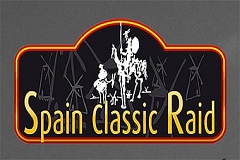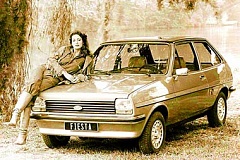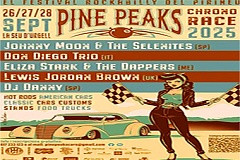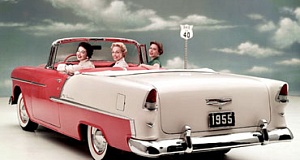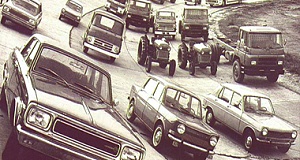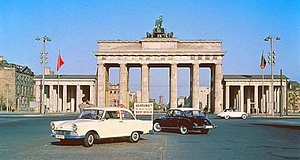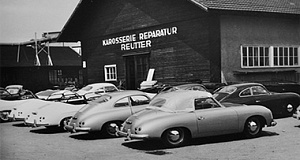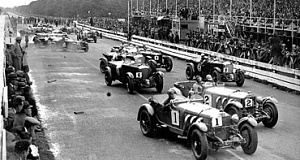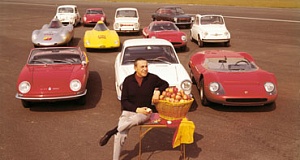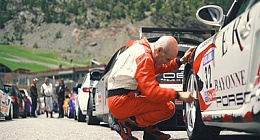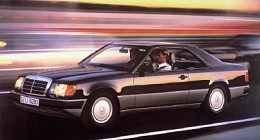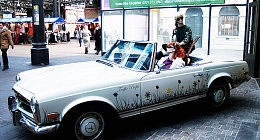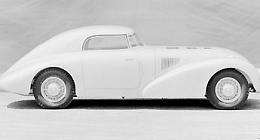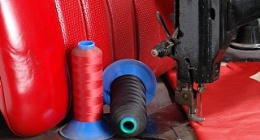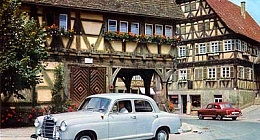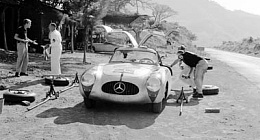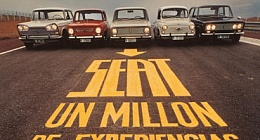El Piloto de carreras Juan Manuel Fangio fue la figura principal de la compañía Mercedes-Benz para ganar el Campeonato del Mundo de Fórmula 1 en la temporada de 1954 y de 1955. Fangio formaba una alianza casi simbiótica con el 196 W de carreras: "Es el coche perfecto, la máquina que un piloto sueña durante toda la vida.", Dijo una vez de la Flecha de Plata

Fangio consiguió un total de cinco títulos mundiales de Fórmula 1 pilotando automóviles de cuatro fabricantes distintos. Sin embargo con Mercedes Benz había una relación muy especial. Él ya había estado trabajando como distribuidor de la marca de Stuttgart en la Argentina en 1951. Y al final de su carrera deportiva, se convirtió en Presidente de Mercedes-Benz Argentina SA en el año 1974.

Juan Manuel Fangio murió en Buenos Aires el 17 de julio de 1995.






Fangio would have turned 100 years old on 24 June 2011
Senior driver of the Mercedes-Benz team in 1954 and 1955
After his career ended, the five-time Formula 1 world champion became the Mercedes-Benz brand ambassador
Stuttgart – Racing driver Juan Manuel Fangio was the leading figure in Mercedes-Benz's campaign to win the Formula 1 World Championship in the 1954 and 1955 seasons. Fangio formed an almost symbiotic partnership with the W 196 R racing car: "It's the perfect car. The machine which every driver dreams about their whole life long," he once said of the Silver Arrow.
Fangio drove to a total of five Formula 1 world titles in vehicles from four different manufacturers. There was something very special about his relationship with Mercedes-Benz though. He had already been working as a dealer for the Stuttgart-based brand in Argentina since 1951. And following the end of his racing career, he became President of Mercedes-Benz Argentina S.A. in 1974.
He died in Buenos Aires on 17 July 1995.
It was at the French Grand Prix on 4 July 1954 that Mercedes-Benz made its first ever appearance with the new Silver Arrows from the W 196 R series. The victor at the Reims circuit was Juan Manuel Fangio, who had been world champion in 1951 and finished second in 1950 and 1953. The Argentinean was already aged 43 at the time, making him older than many of the other drivers in the field. He had furthermore suffered a serious accident in the 1952 season.
Yet far from being a fabulous finale to his career, Fangio's win for Mercedes?Benz at the wheel of the W 196 R marked the start of an extraordinary success story. During 1954 and 1955, Fangio lined up on the starting grid for the Mercedes-Benz team for a total of 19 Formula 1 and touring car races, recording ten wins and a number of other impressive results.
Fangio was born to Italian immigrants on 24 June 1911 in the small country town of Balcarce in Argentina - seemingly a very far cry from a future career as a five-time Formula 1 world champion. But the youngster, who did an apprenticeship as a mechanic, was inspired by his fellow countrymen's passion for motor racing. He came into contact with the local racing driver scene at an early age, gained some experience at the wheel himself and learned how to rebuild vehicles for racing. In 1932, he opened his own car workshop, and four years later Fangio competed in his first race in a converted Ford taxi.
After the end of World War II, Fangio made the switch from rebuilt standard passenger cars to thoroughbred racing cars, and entered the international racing arena. In 1950, he came second in the World Championship driving for Alfa Romeo, before going on to win his first world title for the Italian car maker in 1951. 1951 also marked the start of Fangio's close ties with Mercedes-Benz, however, as it was the year he opened a sales outlet for the Stuttgart brand's cars in Buenos Aires. And it was not long before he was sitting behind the wheel of a Silver Arrow for the first time; in February 1951, Mercedes-Benz came over to Argentina, bringing with it three overhauled pre-war W 154 racing cars for a guest race appearance. Fangio was on the starting grid for the "Premio Presidente de la Nación Juan D. Perón", along with Karl Kling and Hermann Lang. However, the Silver Arrows were unable to reach their top speed on the modern circuit with its many chicanes, and Fangio only managed to finish third.
During the 1952 season, when the World Championship was switched to Formula 2, Fangio suffered a serious accident in Monza. He spent the remainder of the year convalescing from his injuries, most notably from one he sustained to his spine. He was already back in the racing seat in 1953 though, when he finished second in the World Championship with Maserati.
International motor racing was made all the more spectacular in 1954 by the return of Mercedes-Benz to the grand prix arena. Racing director Alfred Neubauer signed the Argentinean driving ace as the captain of the racing team. The Stuttgart-based outfit had been developing the W 196 R racing car for the new Formula 1 season since 1953. It was powered by a 257 hp (189 kW) inline eight-cylinder engine with a displacement of 2.5 litres, desmodromic valves and direct petrol injection. Apart from the Streamliner version, a classic Formula racing car with exposed wheels was also created. The new Silver Arrows were not ready for the start of the season, so Fangio still competed in a Maserati in the first three races. At that time, the Formula 1 World Championship consisted of just a drivers' title. The constructors' championship was only contested from the 1958 season onwards.
On 4 July 1954, Fangio lined up for his first ever grand prix in a Mercedes?Benz: exactly 40 years after Mercedes driver Christian Lautenschlager drove to victory in Lyon, the Stuttgart team returned to the fray at the French Grand Prix in Reims. Fangio took the chequered flag ahead of teammate Karl Kling. The apparently effortless switch from Maserati to the W 196 R once again underlined Fangio's immense ability to adapt: ever since taking part in the tough endurance races in his home country, he seemed to be able to extract the very best from every vehicle. It was this virtuoso improvisational skill that led to victory for the Argentinean time and time again.
The 1954 season turned into a great triumph for Mercedes?Benz and Fangio: he followed up his victory in France with further wins in Germany (Nürburgring), Switzerland (Bremgarten) and Italy (Monza). Fangio was crowned Formula 1 world champion for the second time, with almost double the points of his nearest rival. The Argentinean dominated the 1955 season in similar fashion, winning the grand prix races in Argentina, Belgium, the Netherlands and Italy, and finishing second behind teammate Stirling Moss at the British Grand Prix.
Other exceptional performances by Fangio during this season included second spot at the Mille Miglia, driving solo in a Mercedes-Benz 300 SLR (W 196 S). Winner Stirling Moss, on the other hand, was accompanied by a co-driver, Denis Jenkinson, as was most of the field.
Following Mercedes?Benz's withdrawal from motor racing at the end of the 1955 season, Fangio went on to win two more world championship titles with Ferrari (1956) and Maserati (1957). The following year, the Argentinean called an end to his racing career at the age of 47. In 1974, he assumed the post of President of Mercedes-Benz Argentina S.A. His five Formula 1 world championship titles remained a record until his death in 1995, which was not surpassed until Michael Schumacher achieved the feat in 2003.
Today, tributes to Juan Manuel Fangio include five identical life-size bronze sculptures depicting the exceptional racing driver together with the W 196 R. They can be found in front of the Mercedes-Benz Museum in Stuttgart, outside the Mercedes-Benz headquarters in Buenos Aires, as well as at the Nürburgring, Monza and Monaco circuits.
There is also a Fangio Museum in Balcarce that is run by a local association. Featuring numerous vehicles and other exhibits, it is dedicated to the racing driver's whole life story.
Juan Manuel Fangio: races for Mercedes-Benz
Date Race Vehicle Placed
17.2.1951 Gran Premio Presidente de la Nación Juan D. Perón (Circuito Costanera Norte, Buenos Aires) W 163 3rd
24.2.1951 Gran Premio Maria Eva Duarte de Perón (Buenos Aires) W 163 DNF*
4.7.1954 French Grand Prix (Reims) W 196 R Streamliner 1st
17.7.1954 British Grand Prix (Silverstone) W 196 R Streamliner 4th
1.8.1954 European Grand Prix (Nürburgring) W 196 R exposed wheels 1st
22.8.1954 Swiss Grand Prix (Bern) W 196 R exposed wheels 1st
5.9.1954 Italian Grand Prix (Monza) W 196 R Streamliner 1st
19.9.1954 AVUS Race (Berlin) W 196 R Streamliner 2nd
24.10.1954 Spanish Grand Prix (Barcelona) W 196 R exposed wheels 3rd
16.1.1955 Argentinean Grand Prix (Buenos Aires) W 196 R 1st
30.1.1955 Buenos Aires Grand Prix W 196 R with 3-litre engine 1st
1.5.1955 Mille Miglia 300 SLR 2nd
22.5.1955 European Grand Prix (Monaco) W 196 R exposed wheels DNF*
29.5.1955 Eifel Race (Nürburgring) 300 SLR 1st
5.6.1955 Belgian Grand Prix (Spa-Francorchamps) W 196 R exposed wheels 1st
11.-12.6.1955 Le Mans 24 Hours 300 SLR RET**
19.6.1955 Dutch Grand Prix (Zandvoort) W 196 R exposed wheels 1st
16.7.1955 British Grand Prix (Aintree) W 196 R exposed wheels 2nd
7.8.1955 Swedish Grand Prix (Kristianstad) 300 SLR 1st
11.9.1955 Italian Grand Prix (Monza) W 196 R Streamliner 1st
17.9.1955 Tourist Trophy (Dundrod) 300 SLR with Karl Kling 2nd
16.10.1955 Targa Florio (Sicily) 300 SLR with Karl Kling 2nd
* DNF = Did Not Finish
** RET = Retired
The vehicles
The W 196 R
The Mercedes-Benz W 196 R Formula 1 racing car built for the 1954 season was designed around the criteria laid down for the new Grand Prix formula by the CSI (Commission Sportive Internationale): a displacement of 750 cubic centimetres with a supercharger or 2500 cubic centimetres without, no restrictions on fuel composition, race distance of 300 kilometres with a minimum race duration of three hours.
The Streamliner version was completed first, because the season opener in Reims was suited to very high speeds. This was followed by a variant with exposed wheels. This classic-style grand prix car was then also made available with shorter wheelbases for the second season in 1955: the original 2350-millimetre car from 1954 was joined by racers with wheelbases of 2150 and 2210 millimetres. The shortest variant was ideal for the twists and turns of the city circuit in Monaco.
The space frame was light and strong, while the chassis – featuring a torsion-bar suspension and a new single-joint swing axle at the rear, as well as huge, turbo-cooled duplex drum brakes which were initially mounted centrally on the inside – broke with convention and to good effect. It was powered by an inline eight-cylinder engine (displacement of 2496 cc) with direct injection and desmodromic valve control (positive closing without valve springs) and an output of 256 hp/188 kW at 8260 rpm in 1954 and 290 hp/213 kW at 8500 rpm in 1955. The drive unit was incorporated into the frame's structure tilted at an angle of 53 degrees to the right in order to lower the centre of gravity and reduce the size of the frontal area. Top speed was in excess of 300 km/h.
The 300 SLR
The Mercedes-Benz 300 SLR motor racing car was partially based on the engineering of the successful grand prix racer, but was given the body of a road racing car. It scored some major successes in 1955, thereby adding to the brand's stardom. Its internal designation of W 196 S was already an indication of its close kinship to the grand prix Silver Arrow of the time.
Its engine, whose capacity had been increased to 2982 cubic centimetres by increasing the bore by 2 millimetres and the stroke by 9.2 millimetres, was the most advanced version of the inline eight-cylinder unit from the Formula 1 car. The recommended rev speed, power output and fuel tank capacity varied depending on the nature of the upcoming race, to span the spectrum between sprint (such as the Eifel Race at the Nürburgring over 228.1 kilometres) and marathon (such as at Le Mans).
The wheel suspension of the W 196 R, with double wishbones at the front and a swing axle at the rear, had been adopted with hardly any modifications. The sports car's space frame, weighing just 60 kilograms, was derived more from the 300 SL from 1952, comprising an elaborate framework made up of pipes 25 millimetres in diameter with a wall thickness of 1 millimetre, particularly around the low-set flanks and the sturdier struts in the vicinity of the suspension. The more unusual solutions used on the 300 SLR included a remarkably effective airbrake at the rear. It was raced at Le Mans and at the Swedish Grand Prix in Kristianstad.
With an output of as much as 310 hp (228 kW), the motor racing car was capable of top speeds beyond the 300 km/h mark.
